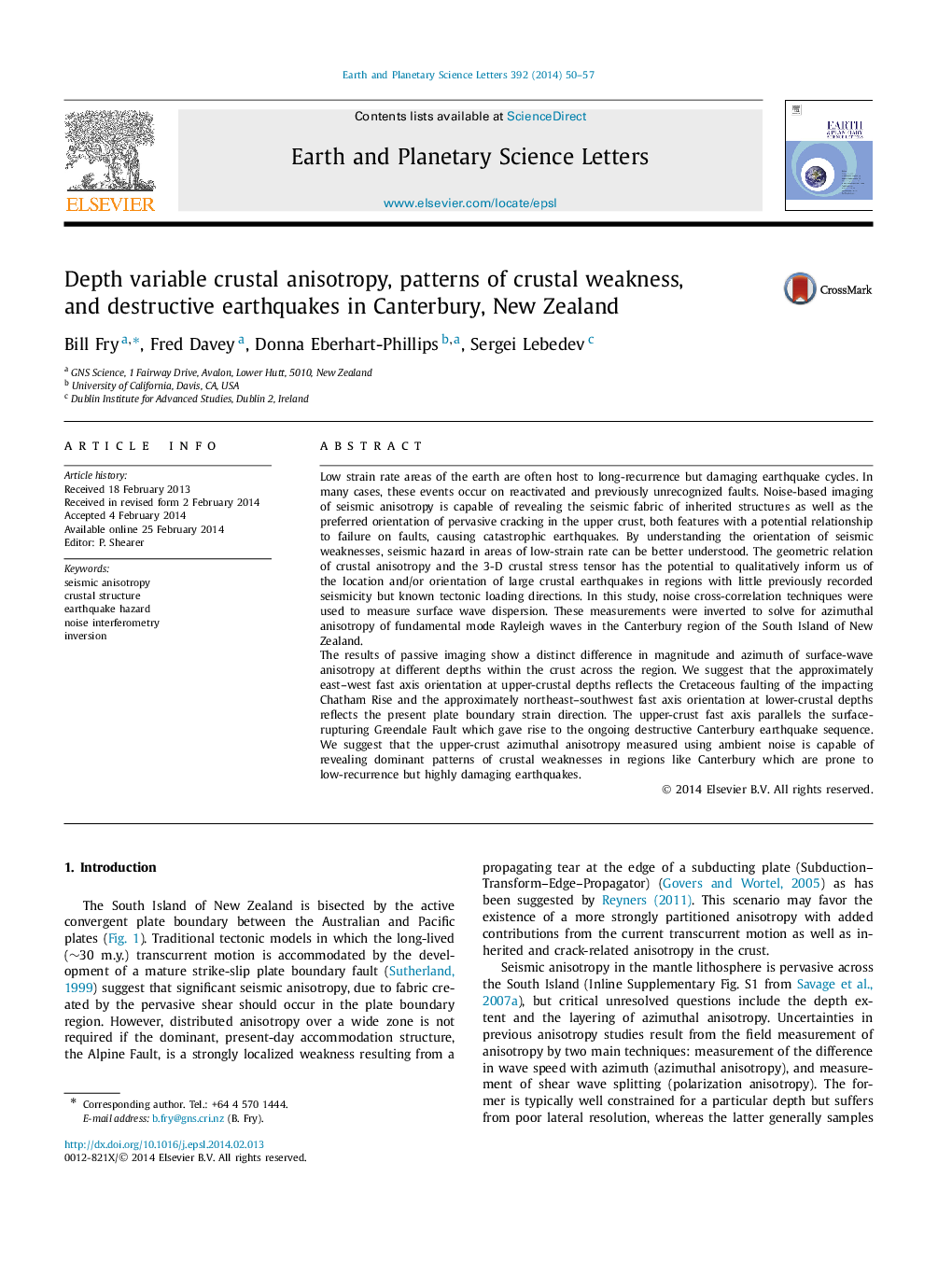| کد مقاله | کد نشریه | سال انتشار | مقاله انگلیسی | نسخه تمام متن |
|---|---|---|---|---|
| 6429474 | 1634764 | 2014 | 8 صفحه PDF | دانلود رایگان |
- We map crustal anisotropy by inverting ambient-noise derived dispersion curves.
- We image anisotropy in an area with very little historic seismicity.
- Crustal anisotropy parallels the dominant azimuth of strike-slip.
- Our technique may be used in other regions with low-strain rates.
Low strain rate areas of the earth are often host to long-recurrence but damaging earthquake cycles. In many cases, these events occur on reactivated and previously unrecognized faults. Noise-based imaging of seismic anisotropy is capable of revealing the seismic fabric of inherited structures as well as the preferred orientation of pervasive cracking in the upper crust, both features with a potential relationship to failure on faults, causing catastrophic earthquakes. By understanding the orientation of seismic weaknesses, seismic hazard in areas of low-strain rate can be better understood. The geometric relation of crustal anisotropy and the 3-D crustal stress tensor has the potential to qualitatively inform us of the location and/or orientation of large crustal earthquakes in regions with little previously recorded seismicity but known tectonic loading directions. In this study, noise cross-correlation techniques were used to measure surface wave dispersion. These measurements were inverted to solve for azimuthal anisotropy of fundamental mode Rayleigh waves in the Canterbury region of the South Island of New Zealand.The results of passive imaging show a distinct difference in magnitude and azimuth of surface-wave anisotropy at different depths within the crust across the region. We suggest that the approximately east-west fast axis orientation at upper-crustal depths reflects the Cretaceous faulting of the impacting Chatham Rise and the approximately northeast-southwest fast axis orientation at lower-crustal depths reflects the present plate boundary strain direction. The upper-crust fast axis parallels the surface-rupturing Greendale Fault which gave rise to the ongoing destructive Canterbury earthquake sequence. We suggest that the upper-crust azimuthal anisotropy measured using ambient noise is capable of revealing dominant patterns of crustal weaknesses in regions like Canterbury which are prone to low-recurrence but highly damaging earthquakes.
Journal: Earth and Planetary Science Letters - Volume 392, 15 April 2014, Pages 50-57
